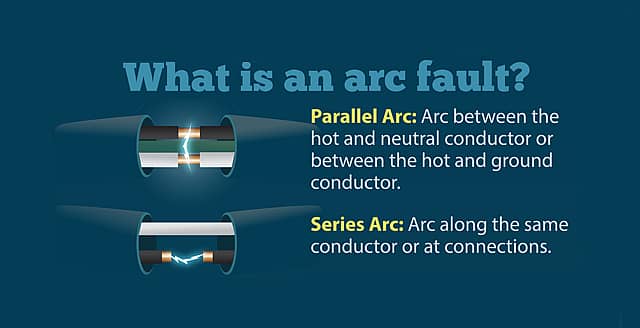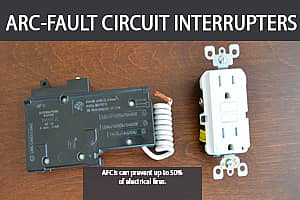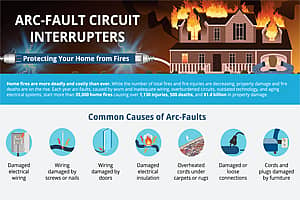AFCIs Prevent Home Fires
Over the last thirty years, our homes have been dramatically transformed by modern electrical devices; however, these same devices have also contributed to the shocking number of electrical fires this country suffers every year. Many existing homes are simply overwhelmed by today’s electrical demands, putting them at greater risk of arc faults and arc-induced fires.
An arc fault is a dangerous electrical problem caused by damaged, overheated, or stressed electrical wiring or devices. Arc faults can occur when older wires become frayed or cracked, when a nail or screw damages a wire behind a wall, or when outlets or circuits are overburdened.
In the United States, arcing faults cause more than 30,000 home fires each year, resulting in hundreds of deaths and injuries and more than $750 million in property damage. The solution to this problem is a combination arc fault circuit interrupter, or AFCI. The CPSC estimates that AFCIs could prevent more than 50 percent of the electrical fires that occur every year.
AFCIs and the NEC
Since the 2008 edition, the National Electrical Code has included significantly expanded requirements for AFCI protection in all new homes. However, these new provisions do not become effective unless the current edition of the Code is formally adopted into state and local electrical codes. State adoption and enforcement of the NEC with its AFCI intact is key to preventing fires, protecting homes, and saving lives.
Home builders in some states have challenged the increased requirements for AFCI technology, claiming that these devices will significantly increase the cost of a home while making very little difference in improving safety.
Safety advocates maintain that the added cost for AFCI protection is well worth the benefits the technology provides to the homeowner. Depending on the size of a given home, the cost impact for installing additional AFCI protection in a home is $140 – $350.
The debate surrounding this technology has led some states to remove the additional AFCI requirements from the code during the adoption process. In 2005, Indiana became the first and only state to remove AFCI provisions that were originally included in the state’s electrical code.








